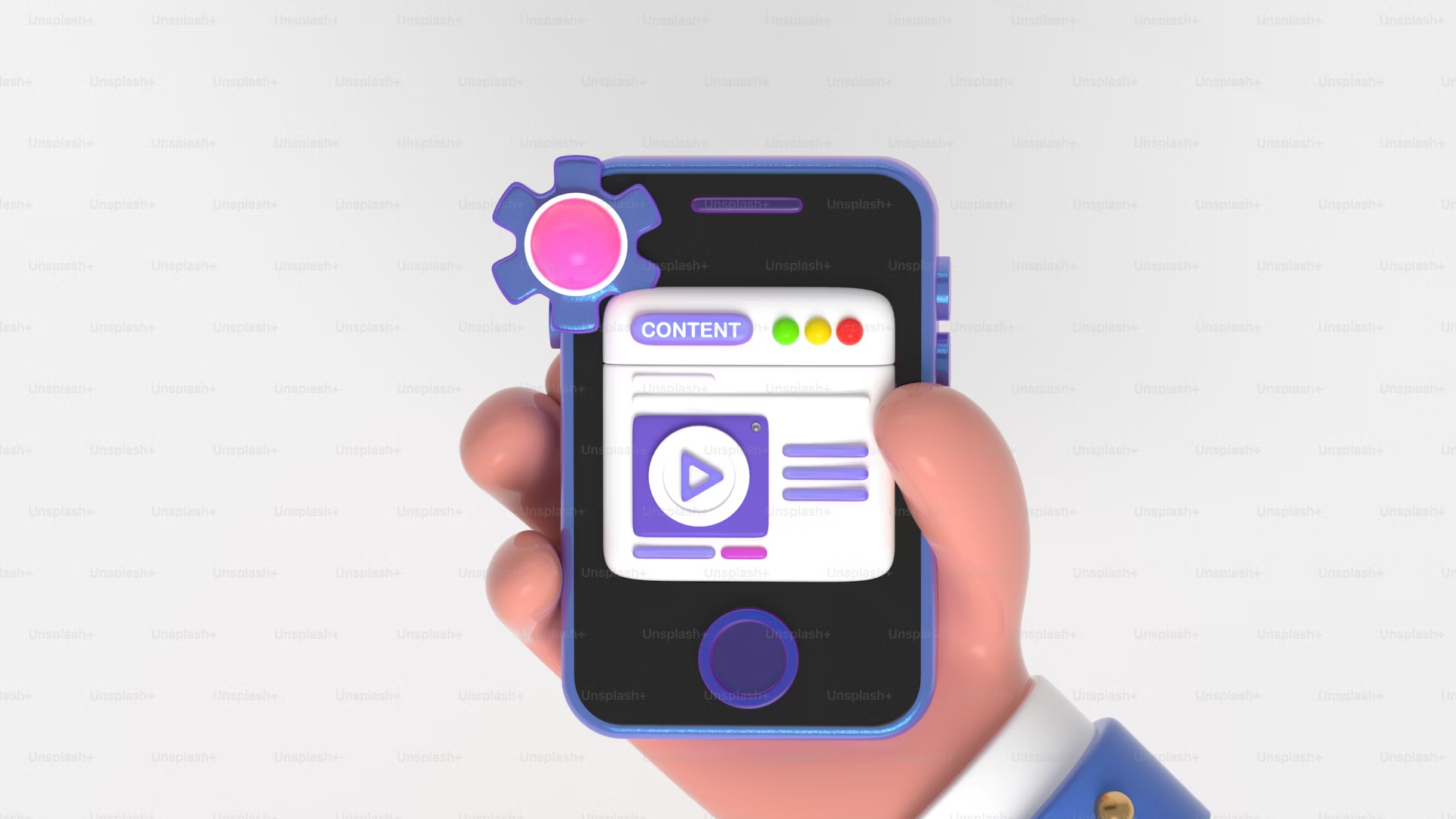Niche Branding: Targeting Micro-Communities for Maximum Impact
In a time when every market feels overcrowded, niche branding has become an effective weapon. This strategy distinguishes your business and brand’s core values and messages from the specific needs and passions of micro-communities.
Quick Links
Understanding what branding means for your business takes on a whole new depth when you target these tightly-knit groups. It’s about making an impact where it truly resonates, turning casual browsers into loyal advocates.
There’s a lot to learn, so let’s get started.
What is Niche Branding?
Niche branding is the strategic focus on a niche market—a specific group of people or businesses eager to purchase a particular offering. It involves crafting your brand’s message and marketing strategies to resonate deeply with this select group.
Unlike broad marketing approaches, niche branding hones in on particular preferences and needs, enhancing customer loyalty by providing precisely what they seek.
This concentrated approach makes your brand highly relevant to its audience and helps you stand out in a crowded marketplace by delivering targeted solutions that larger brands may miss. The outcome is a distinctive brand identity that directly connects with its intended market.
Understanding Micro-Communities
With “digital campfires” becoming more popular with younger audiences, there’s no better time than now to pay attention to micro-communities.
Micro-communities are smaller groups within the larger market, united by specific interests or needs. These groups are close-knit and interact frequently, making them perfect targets for brands that want to forge strong connections with specific types of customers.
Building relationships with these micro-communities helps create strong brand loyalty. Customers who feel a brand understands them are not just more likely to stick with it but also tend to spend more.
By focusing on these communities, brands can offer exactly what these customers want. Examples include companies that cater to unique hobbies, environmental concerns, or specific professions. These targeted efforts lead to a more loyal customer base.
Steps in Building a Niche Brand
Building a strong, niche brand doesn’t happen overnight. It requires a detailed, strategic approach that piques the heart of your target micro-community. The following is a breakdown of the steps involved:
1. Identify Your Niche
Utilize detailed market analysis tools and consumer behavior data to identify potential niches. Look for underserved or specific segments within larger markets where your product or service can meet a unique need.
Next, develop detailed customer profiles that describe the demographics, interests, and buying behaviors of your target audience. This helps to clarify who you are targeting and why they would choose your brand.
2. Engage the Micro-Community
Actively participate in spaces where your niche community gathers, such as specific social media groups, forums, or local events. This engagement is crucial for understanding their values and needs.
Enhance your interactions by partnering with micro-influencers within the community. These influencers often have higher engagement rates because they maintain a more personal relationship with their followers, making them ideal for conveying your brand’s message authentically.
3. Product Development for Niche Markets
Adapt your products or services to better fit the specific requirements and preferences of your niche market. This could involve modifying existing products or developing new ones based on what you learn from community feedback.
Implement a cycle of testing with your target audience and use the results to make improvements. This iterative process ensures that the final product truly meets the expectations of your niche.
4. Marketing and Promotion Strategies
Design advertising campaigns that specifically appeal to the interests and aesthetics of your niche market. Tailor your messaging to reflect the unique attributes that your brand offers them.
Augment these campaigns with high-impact brand experiences that make your audience feel a strong, personal connection to your brand. This could include interactive online experiences, exclusive events, or personalized customer service.
5. Monitoring and Adapting
Regularly analyze the effectiveness of your marketing strategies and product offerings using metrics like sales volume, customer retention rates, and social media engagement.
Be prepared to pivot your strategies in response to shifts in the market or changes in consumer preferences. Staying flexible and responsive is key to maintaining relevance in a niche market.
The steps outlined above help your brand consistently meet your niche’s expectations and evolve with their needs. Use them as a guide to build a niche brand that captivates your specific audience.
Avoiding Common Pitfalls
While niche branding is a powerful strategy, there are potential pitfalls that can hinder your success, especially since niche markets are often small and tightly focused. Here are key mistakes to avoid:
Over-specialization
Being a specialist in your niche is non-negotiable. However, delving too deeply into a narrow niche might limit your growth potential. Make sure there is a sizable enough customer base to sustain your business over time.
For example, a company that focuses solely on left-handed guitar players might find the market is too small to sustain its business.
Neglecting Community Feedback
Ignoring the insights and feedback from your targeted community is a critical mistake. Regular interaction is essential to adapt and refine your offerings as the needs and preferences of your niche evolve.
For instance, a pet food brand ignores suggestions from its community to offer grain-free options, resulting in a loss of trust and reduced sales.
Inconsistency in Brand Messaging
A consistent message is crucial in niche branding. Frequent shifts in your brand’s voice or values can confuse your audience and weaken loyalty. Keep your messaging clear and aligned with your niche’s expectations.
Suppose a wellness brand frequently changes its messaging from luxury wellness to budget health solutions. This confused its core customers, pushing them towards competitors with more consistent branding.
Failing to Adapt to Market Changes
Niche markets can change rapidly. It’s important to continuously monitor your audience and be flexible in your strategy to accommodate shifts in consumer behavior or market conditions.
Consider a vinyl record shop that sticks to its original business model despite the increasing popularity of music streaming services. Their niche gradually abandoned them, resulting in a drastic decline in sales.
Underestimating the Competition
Even small niches can attract competitors. Stay vigilant about other companies that may also be targeting your niche. Keep your brand competitive by innovating and enhancing the value of your offerings.
For example, a boutique tea brand underestimates a new competitor focusing on rare teas. As the competitor gained more popularity, the brand started losing market share.
Harnessing Technology in Niche Branding
As niche branding continues to evolve, two technological advancements are proving indispensable: data analytics and marketing automation. These tools are reshaping how brands approach their markets and setting new standards for precision and efficiency.
Deep Dive with Data Analytics
Today, savvy retailers harness data analytics not just to follow but to anticipate consumer behavior. This approach allows brands in niche markets to not only identify their audience but also to understand their habits and preferences on a granular level.
With this data, a brand can craft messages and products that hit the mark every time, transforming general interest into genuine loyalty.
The Democratization of Marketing Automation
The falling costs of marketing automation software are a game-changer, making sophisticated marketing tools accessible to brands of all sizes. This shift means even small-scale operations can now deploy targeted campaigns that feel personal and timely.
Automation’s real power lies in its ability to maintain a constant line of communication with your audience, deliver tailored content that engages and converts, and keep resource use lean.
These technologies are the backbone of any modern niche branding strategy, offering a way to deepen connections and streamline efforts in increasingly crowded markets.
Exploring Effective Niche Branding: Superdry and Aldi
Superdry and Aldi stand out as exemplary models when looking at niche branding strategies. Each business has employed distinct tactics that resonated deeply with its target audiences. These brands have carved out formidable positions in their respective markets. Let’s examine how:
Superdry
Superdry created a unique cultural fusion that combines American vintage with Japanese imagery and British sartorial flair. This eclectic mix creates a distinctive aesthetic that appeals to a wide audience, enabling rapid global expansion.
The fashion brand’s strategy of leveraging pop culture and celebrity endorsements amplifies its brand appeal, making its clothing line not just a product but a lifestyle choice.
Aldi
Aldi takes a radically different approach by emphasizing simplicity and affordability. Their no-frills shopping experience, coupled with a commitment to quality at low prices, taps into the consumer desire for value without the typical retail complexity.
This clarity and efficiency have fostered a strong customer base that appreciates Aldi’s straightforwardness and cost-effectiveness, distinguishing it from more traditional, larger grocery chains.
Final Words
The stories of Superdry and Aldi highlight how targeted strategies can create strong market positions and deep customer loyalty. Both brands show that understanding and engaging with specific audiences can lead to significant business success. These insights encourage us to craft branding that truly speaks to and serves our target communities.
Embrace these strategies to set your business apart and forge lasting customer connections. Let’s put these ideas into action and start building your own unique brand identity.
Author Bio: Edrian Blasquino
Edrian, known to his friends as Ian, is a content writer with a passion for words. With a natural flair for storytelling, he crafts engaging and informative pieces that captivate readers. In his spare time, he can be found exploring new topics and ideas, reading a good book, or sipping on a hot cup of tea. With a desire to share his unique perspective and connect with others through his writing, he is excited to pursue content writing as a hobby and take his skills to the next level.
Why WooCommerce is the Best Choice for Your Online Store?
WooCommerce stands out as a top option for anyone looking to build an online store. This platform…
0 Comments8 Minutes
How to Use AI-Powered SEO Tools for WordPress eCommerce
SEO is a critical factor in the success of any e-commerce WordPress store. As competition…
0 Comments11 Minutes
Why Short-Form Videos Are the Future of Content Marketing
Your Instagram customers spend over 50% of their time watching short-form videos and reels. Rather…
0 Comments12 Minutes
The Role of Digital Marketing in Business Growth
Online marketing touches every aspect of a business, whether it is initiating the idea or for an…
0 Comments3 Minutes
AI Meets Authenticity: Balancing Automation and Human Touch in Content Marketing
Is your brand starting to sound like a robot? In a world where algorithms write faster than any…
0 Comments8 Minutes
Essential Tools for Enhancing Web Design and UX Hosting
Have you ever visited a website that felt slow, clunky, or confusing? A website that is poorly…
0 Comments11 Minutes
How a Mini Cart Transformed My Store’s Shopping Experience
Okay, real talk—running an online store is hard. You think you’ve got everything figured out, you…
0 Comments9 Minutes
Balancing Your Security Initiatives With Industry Compliance Requirements
Managing a business today comes with a number of daily battles that need to be fought. Resources…
0 Comments11 Minutes








